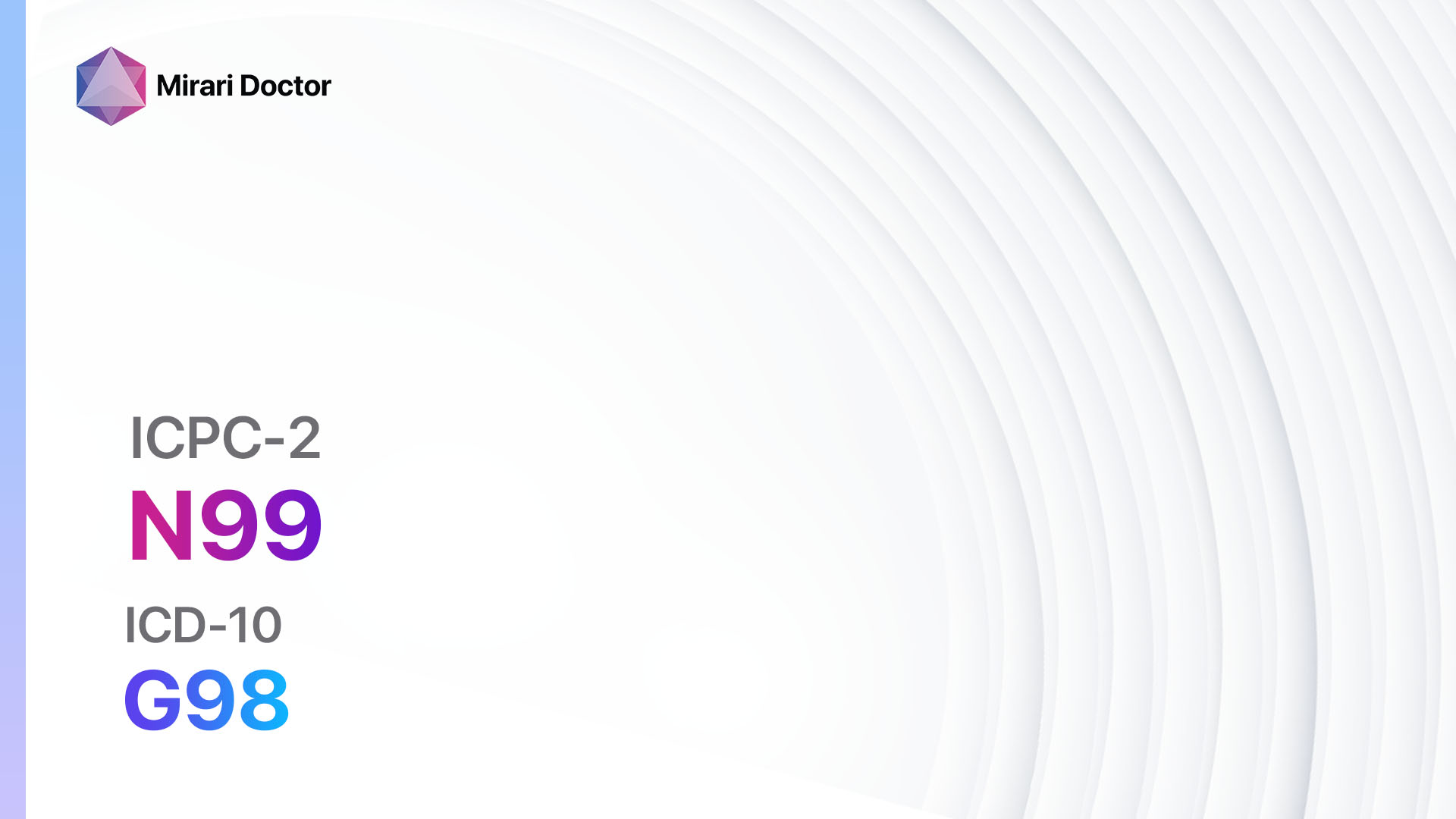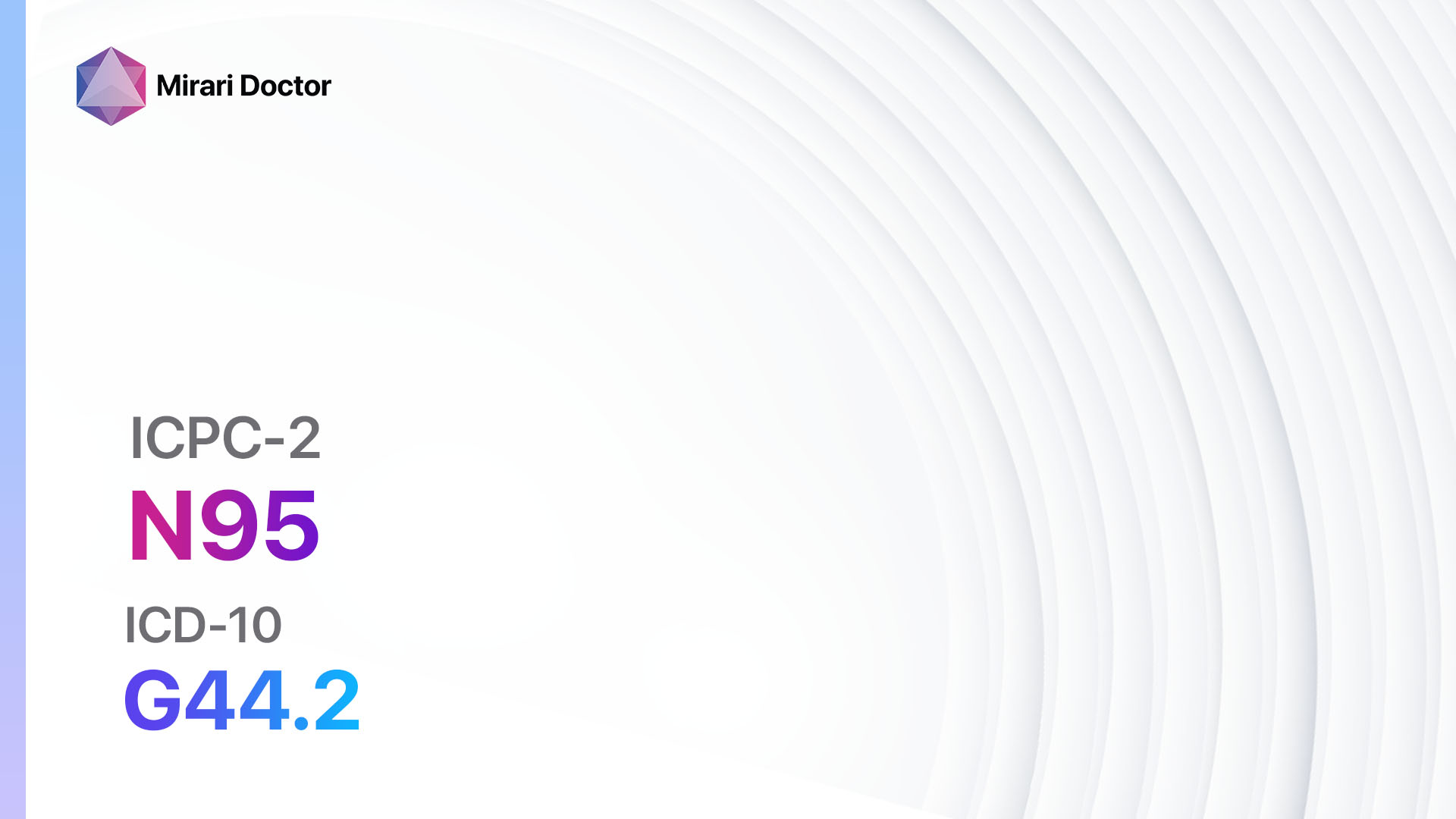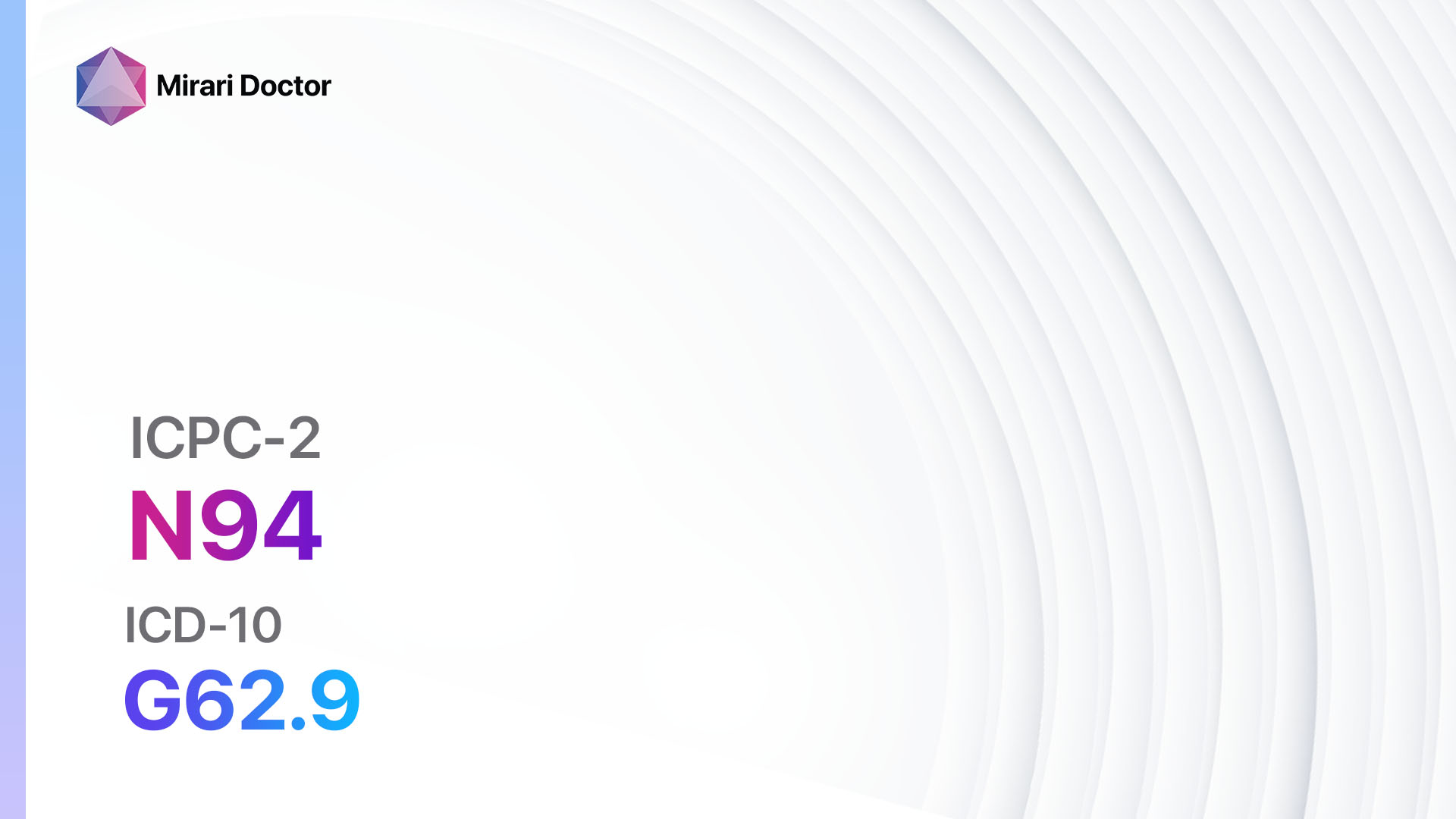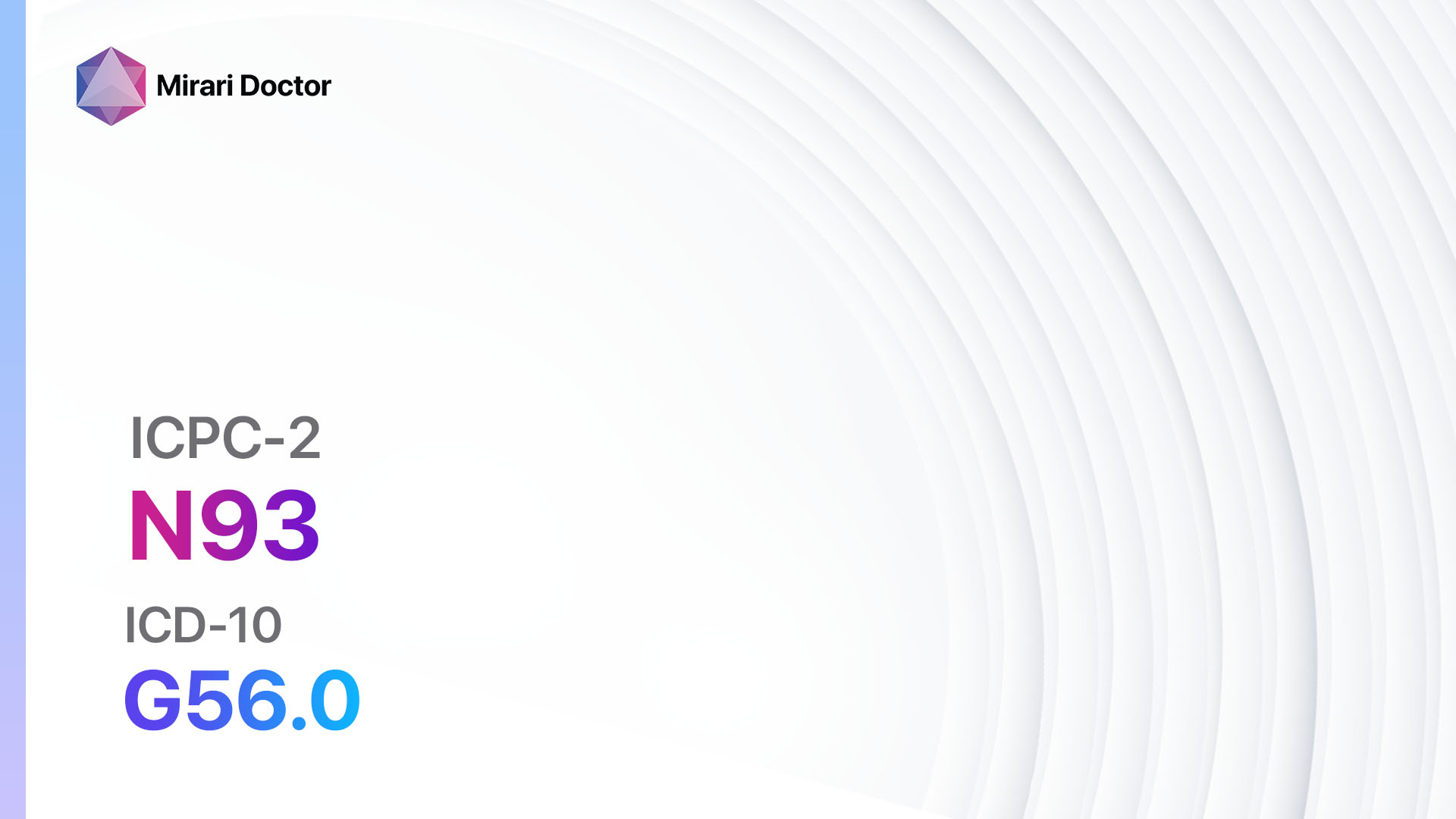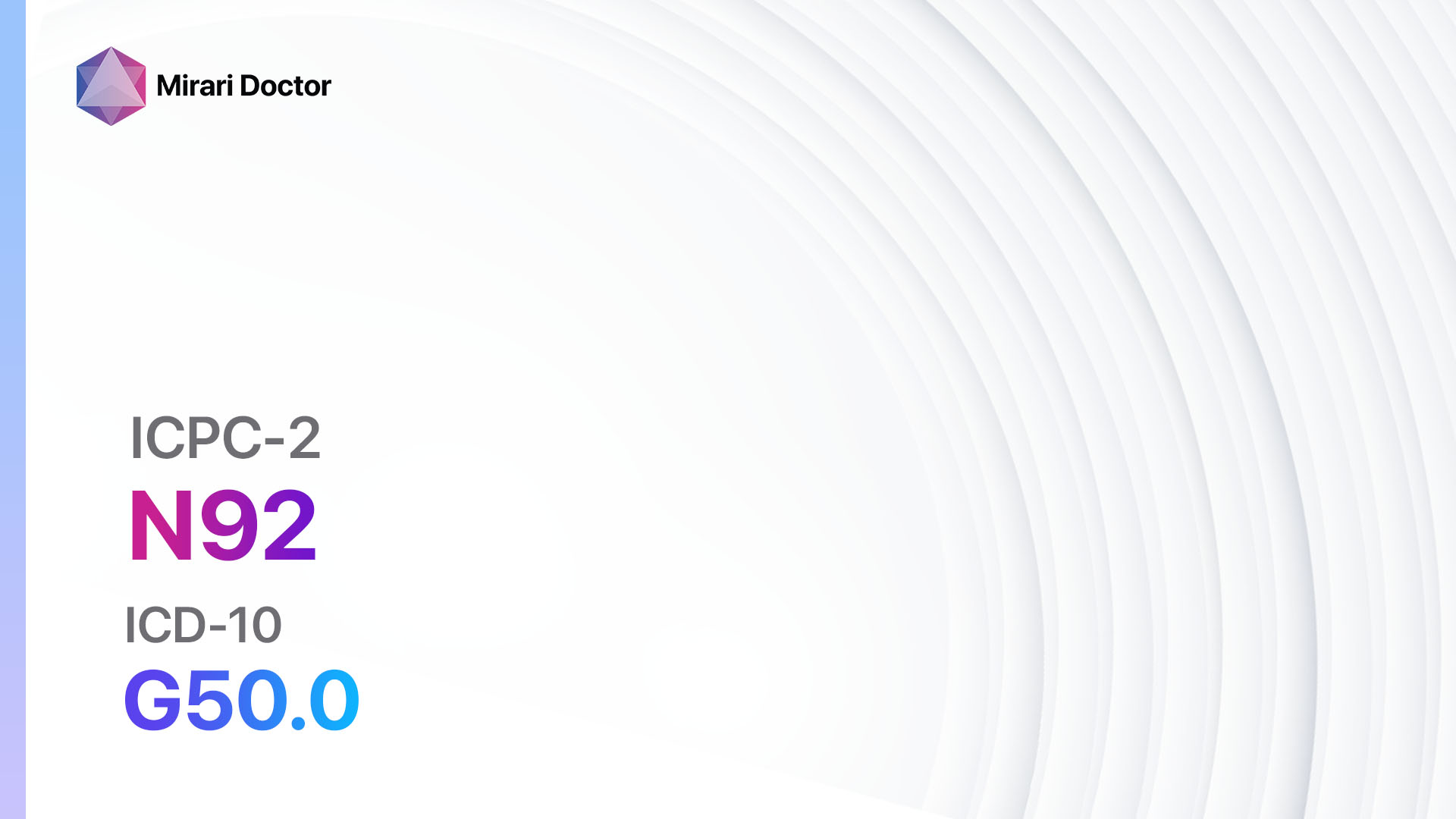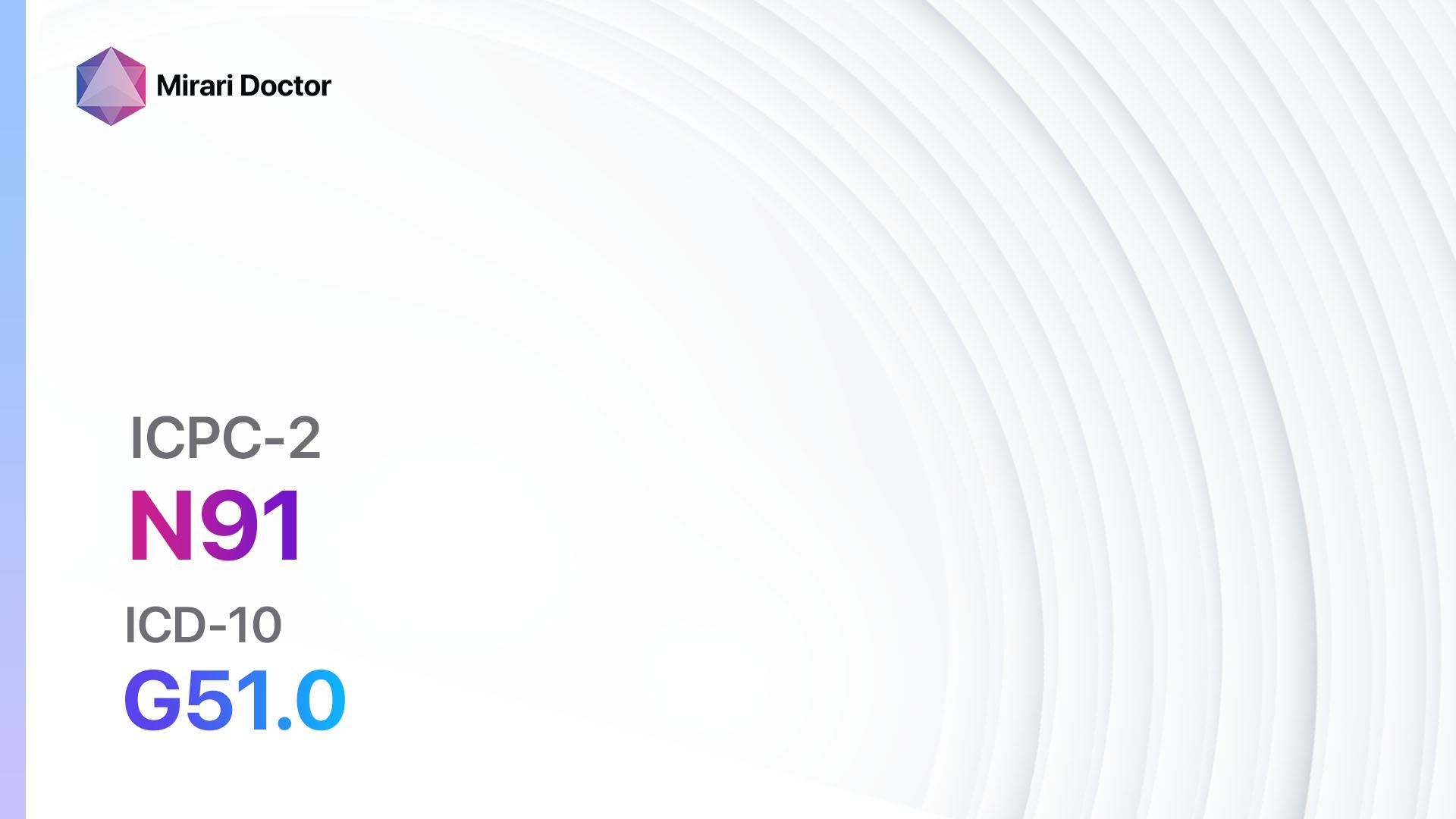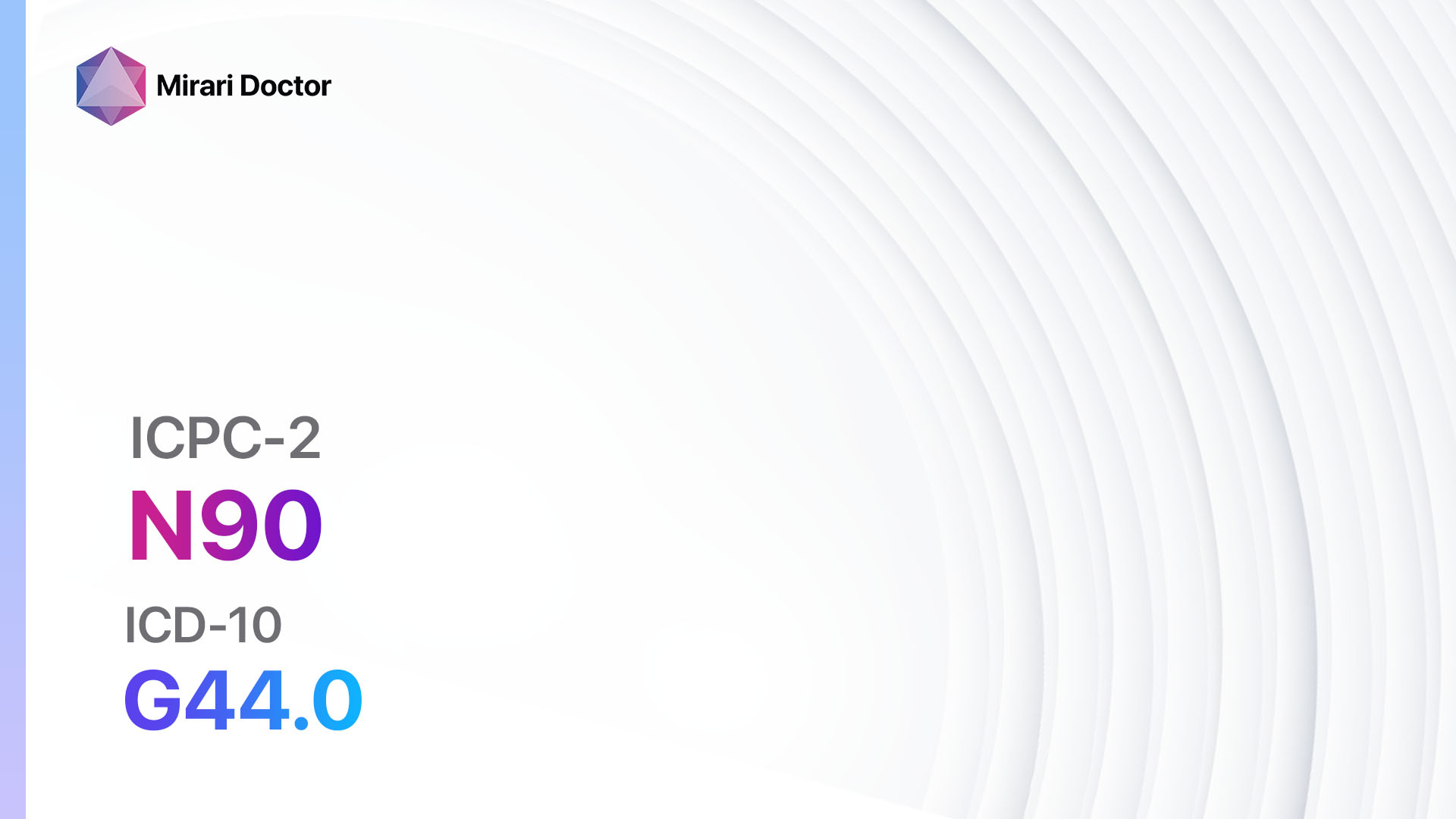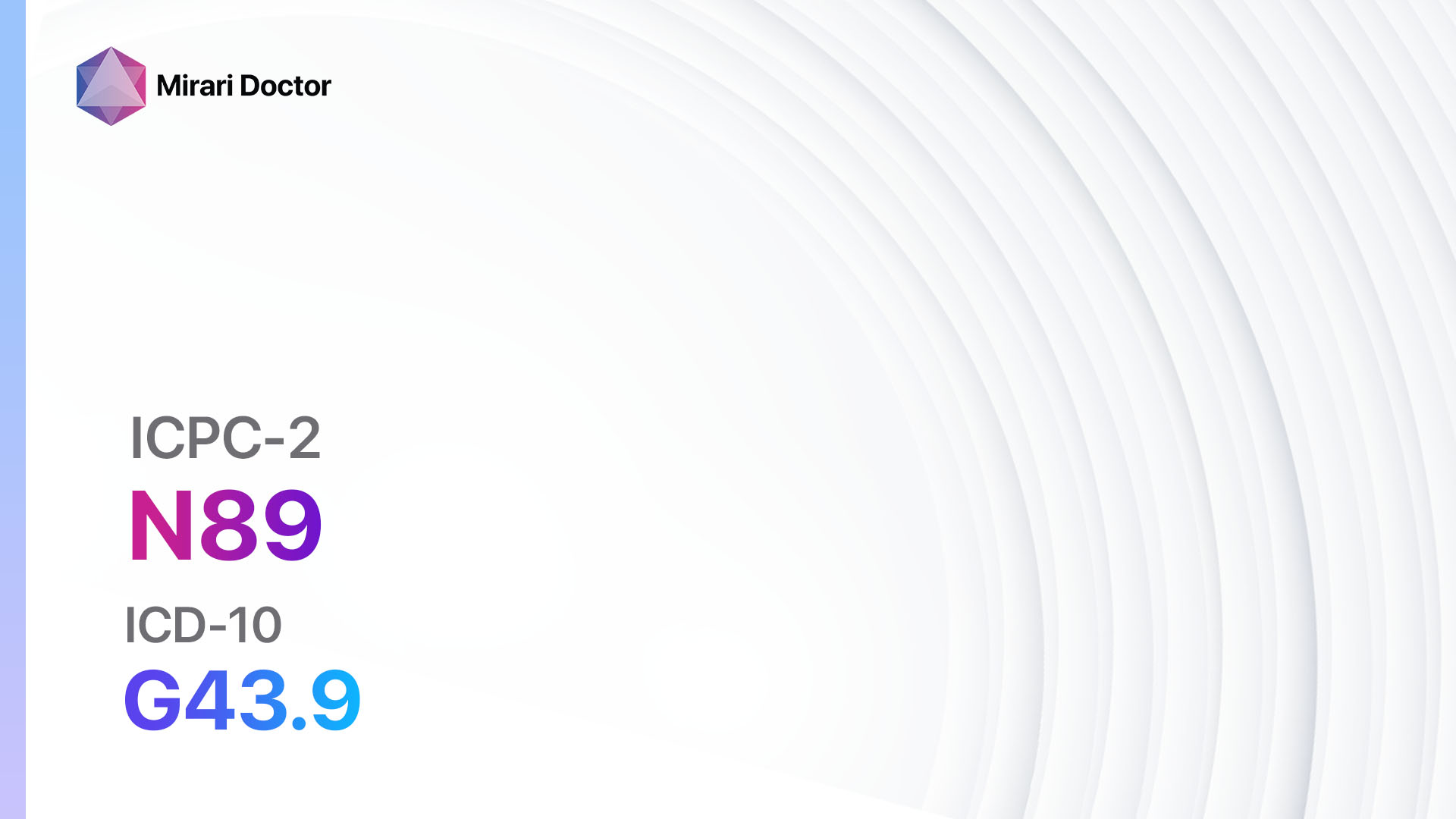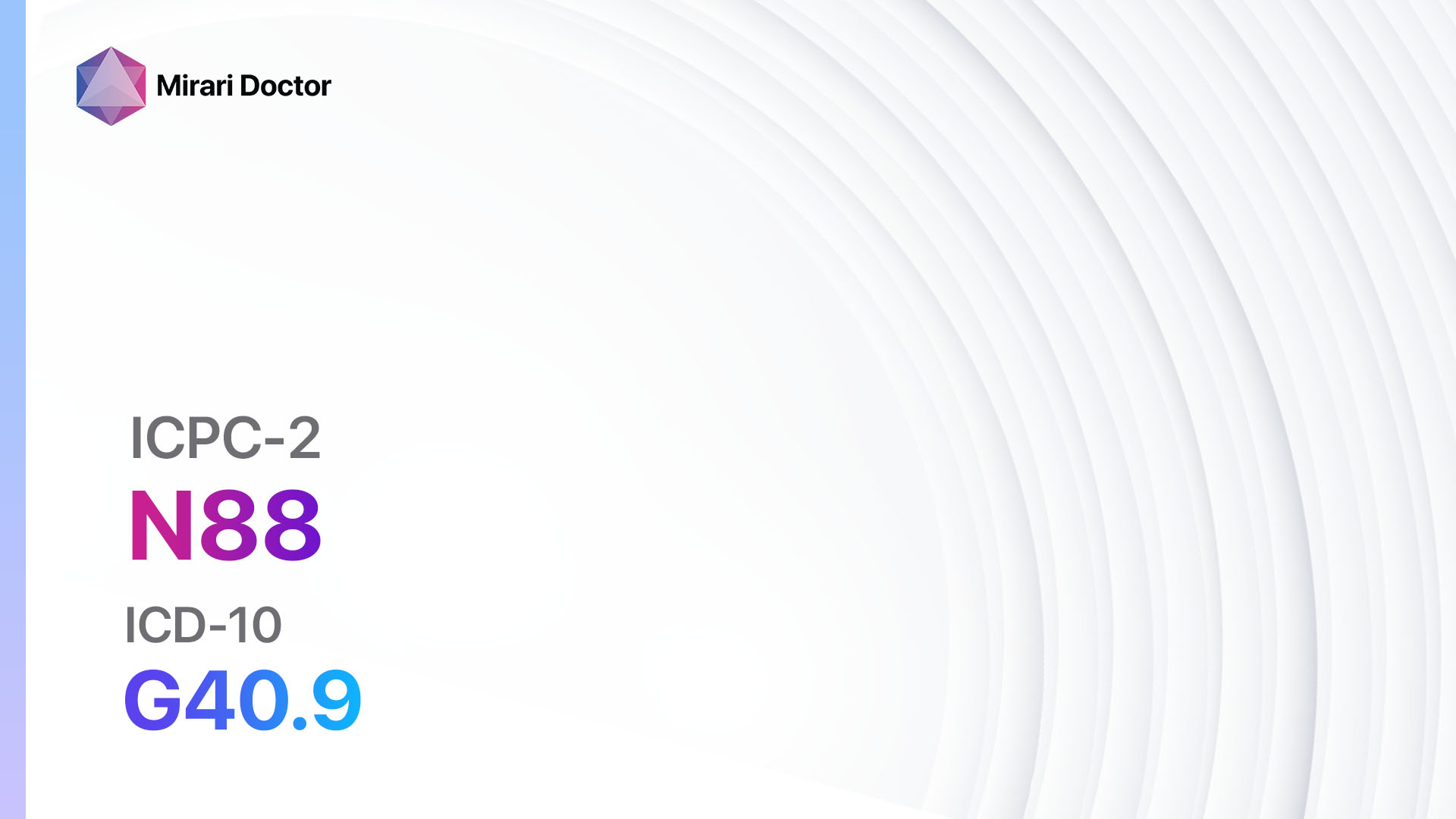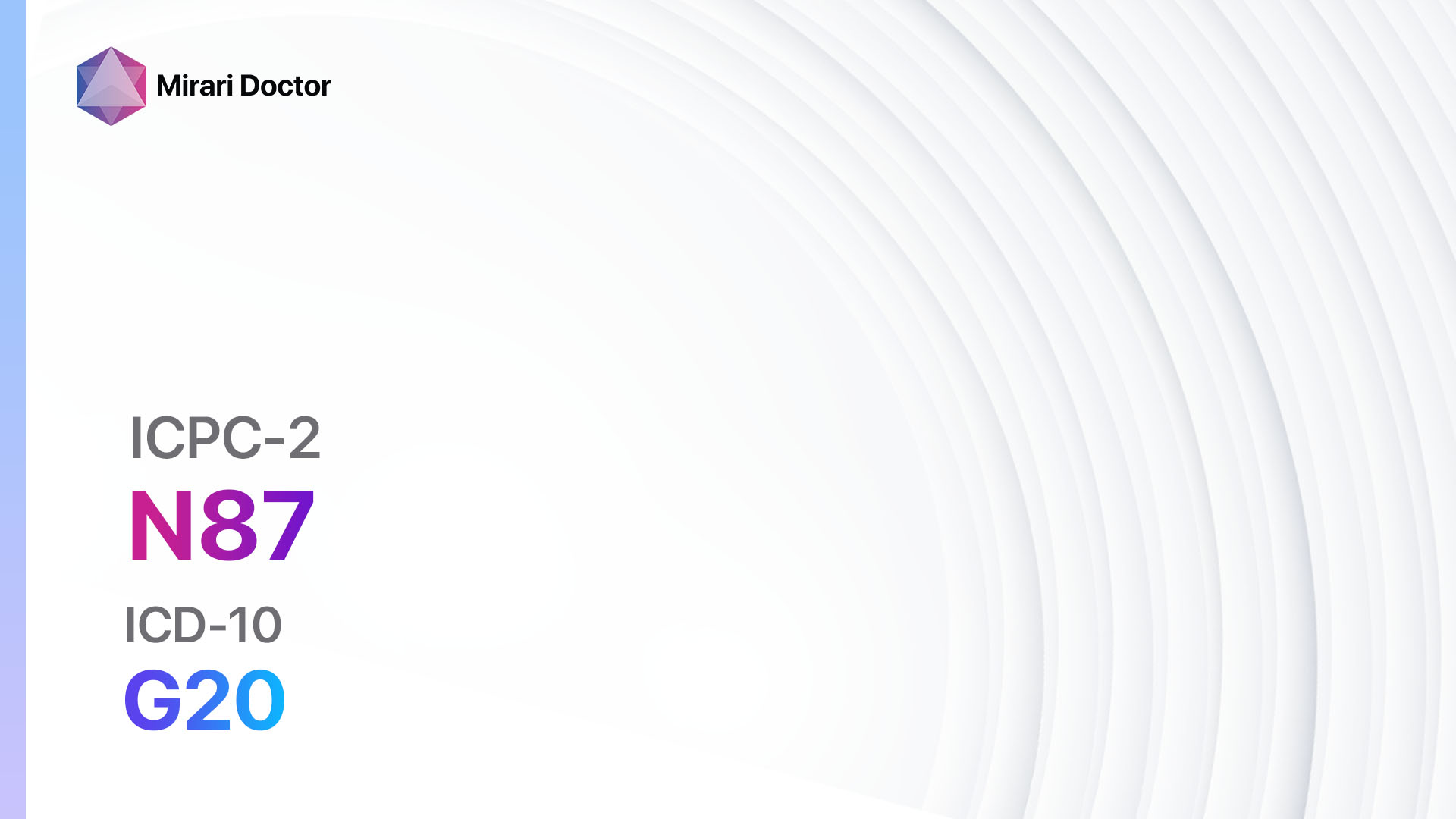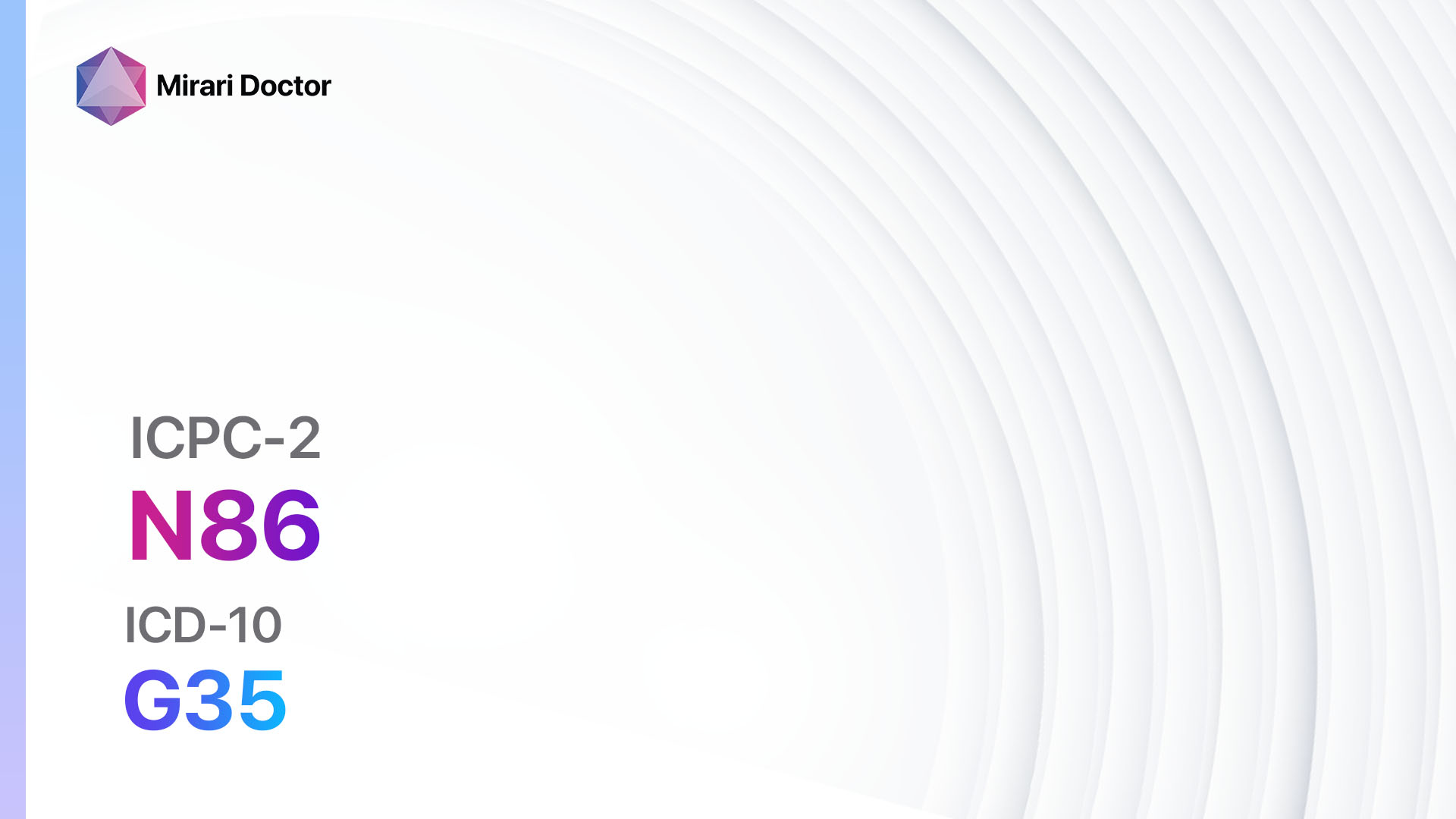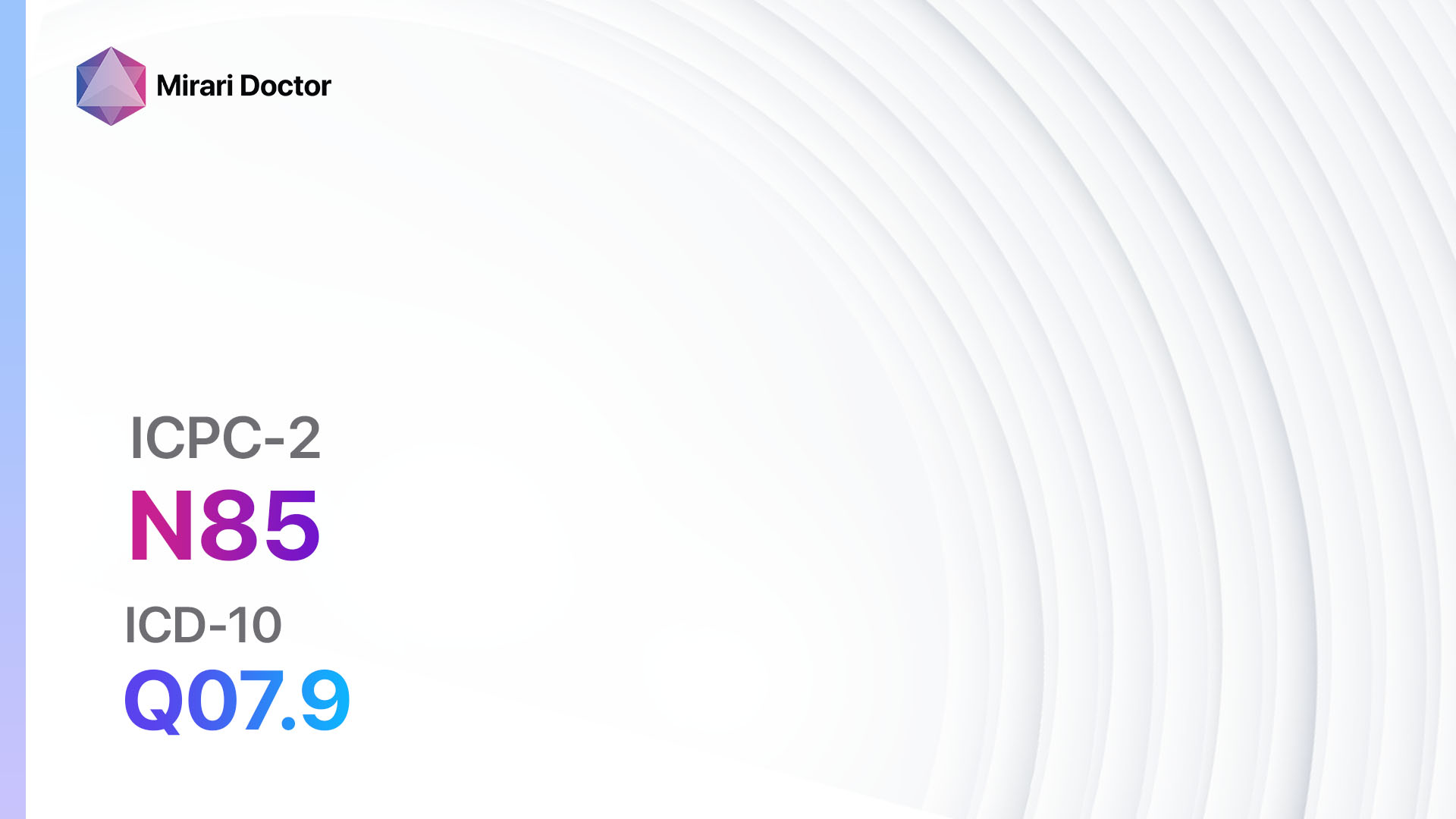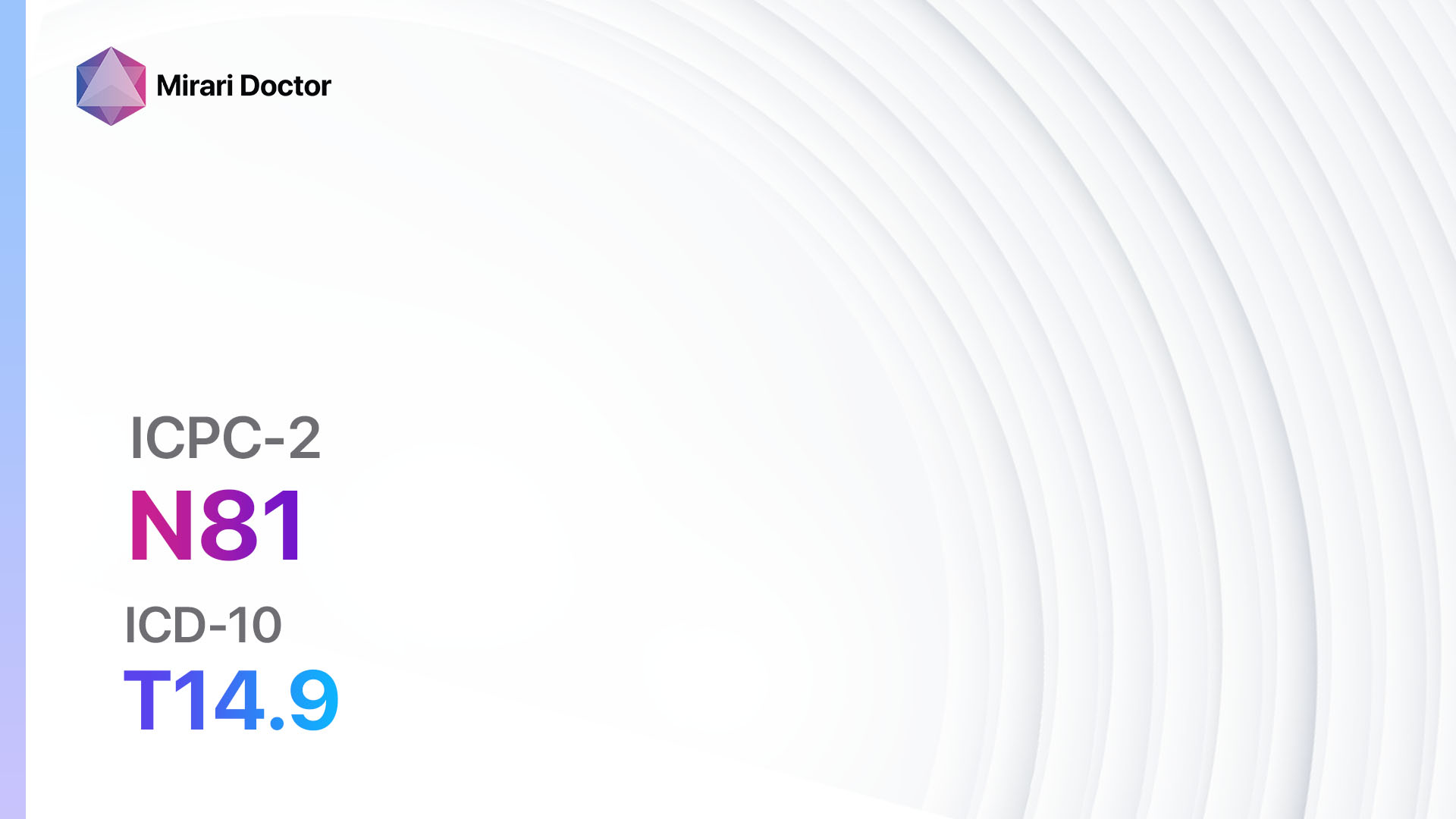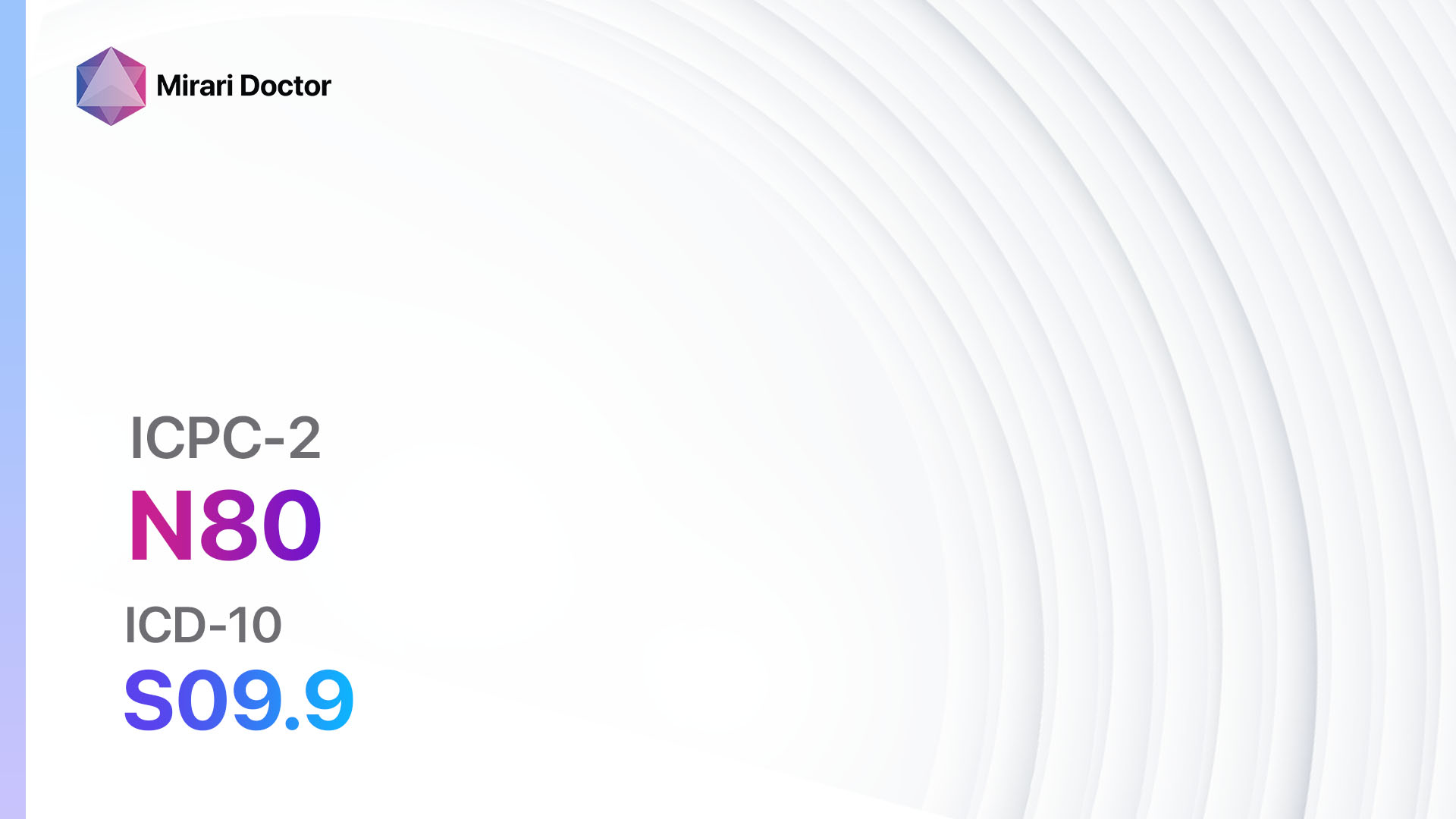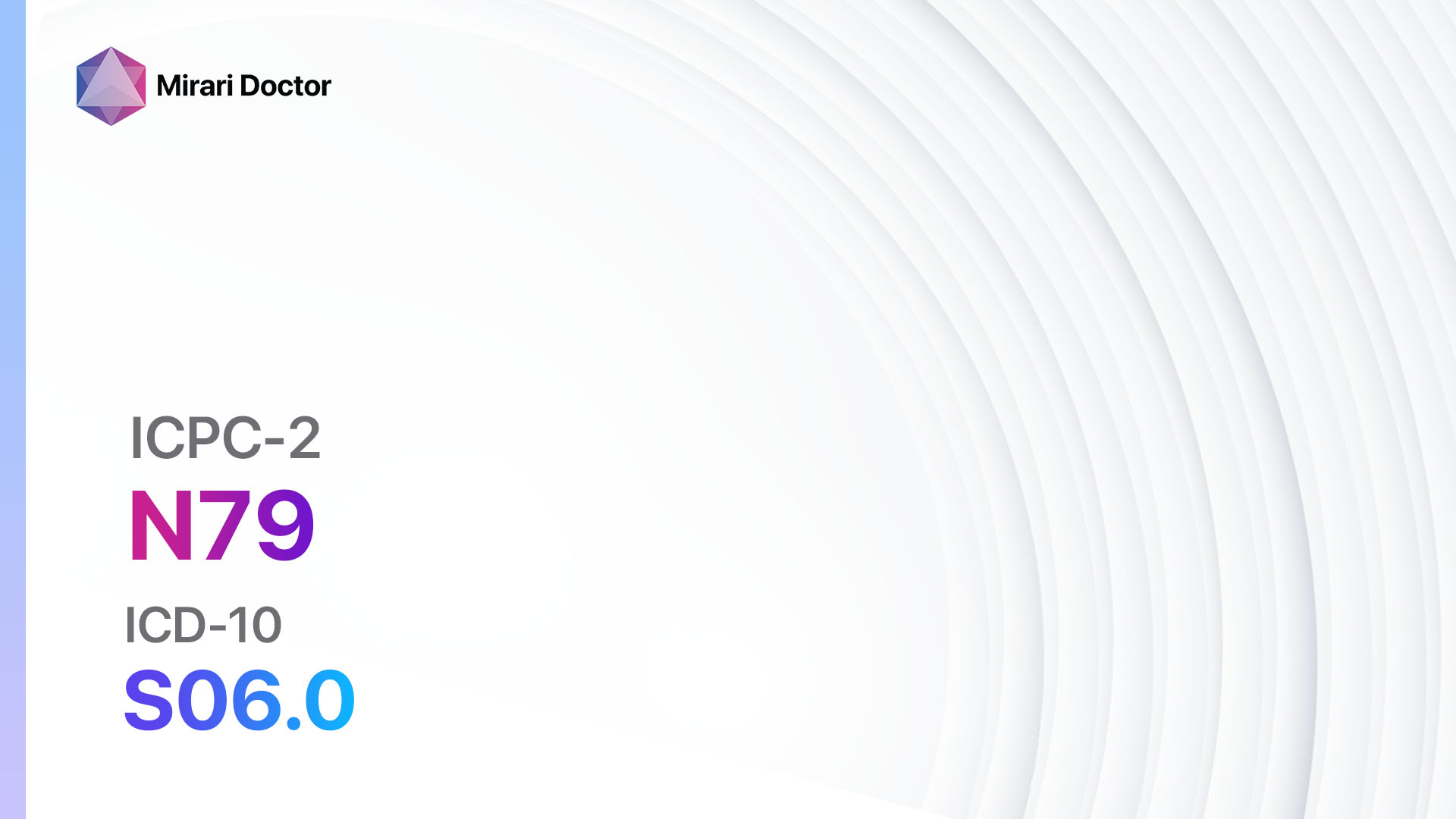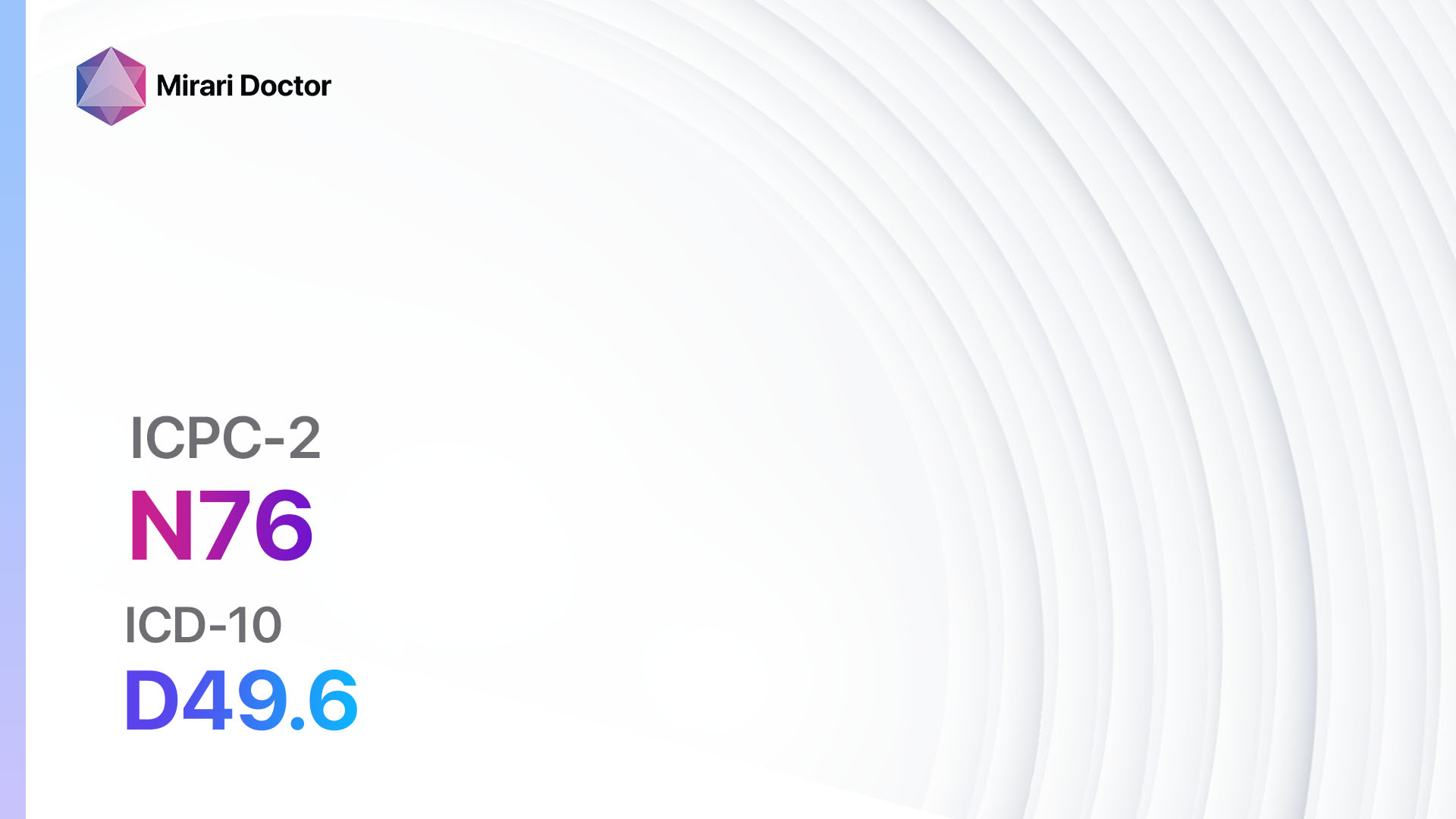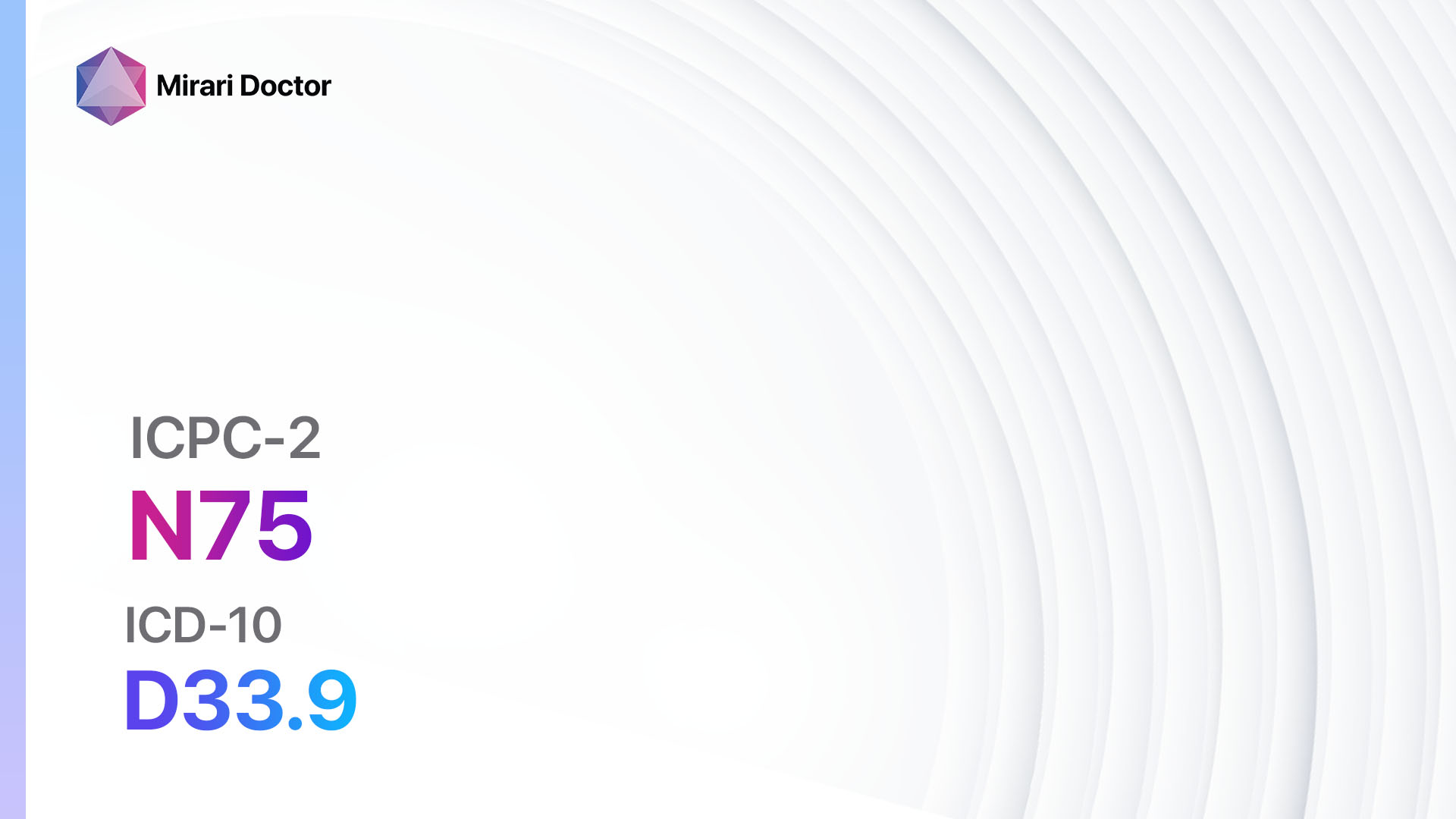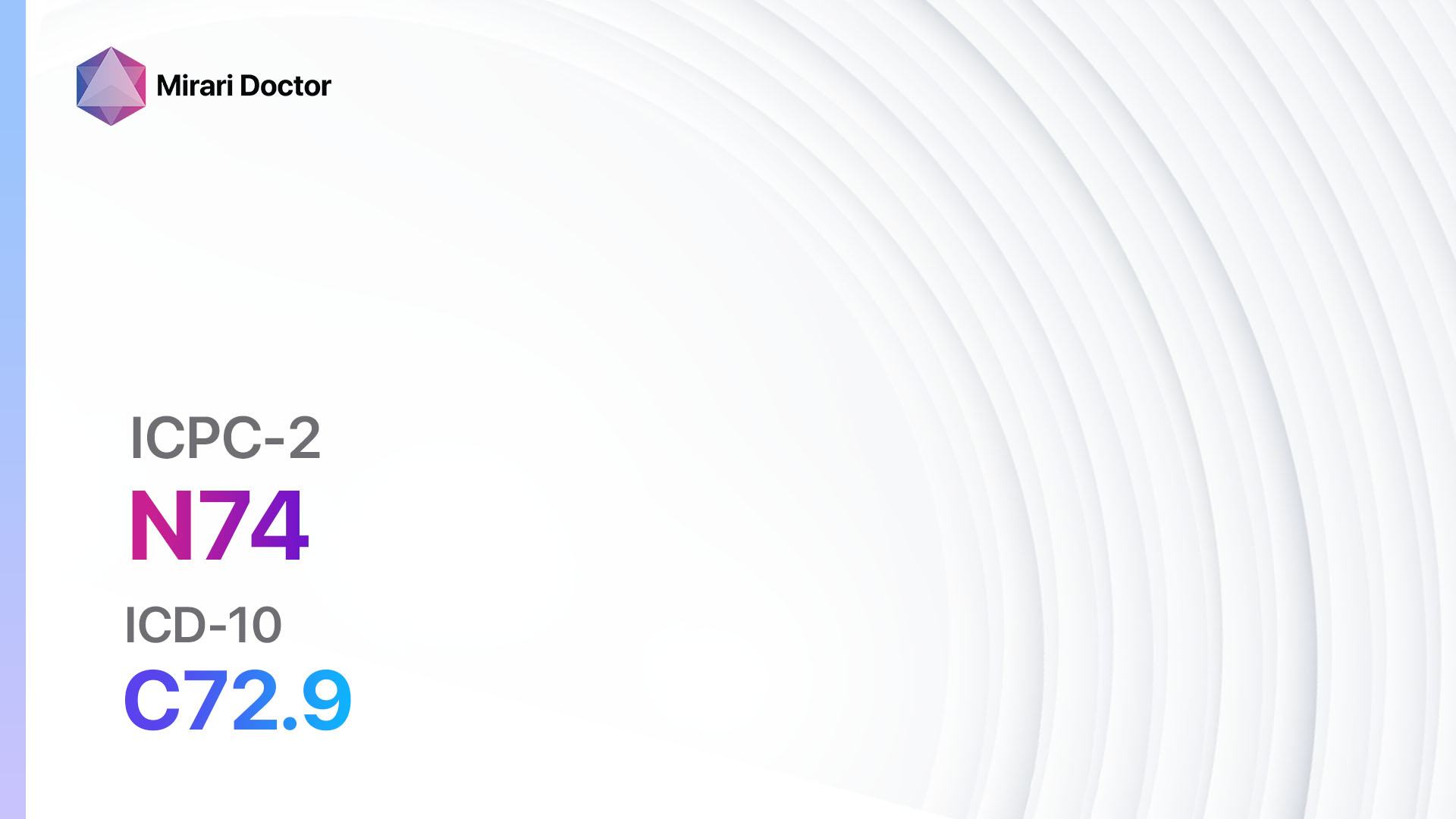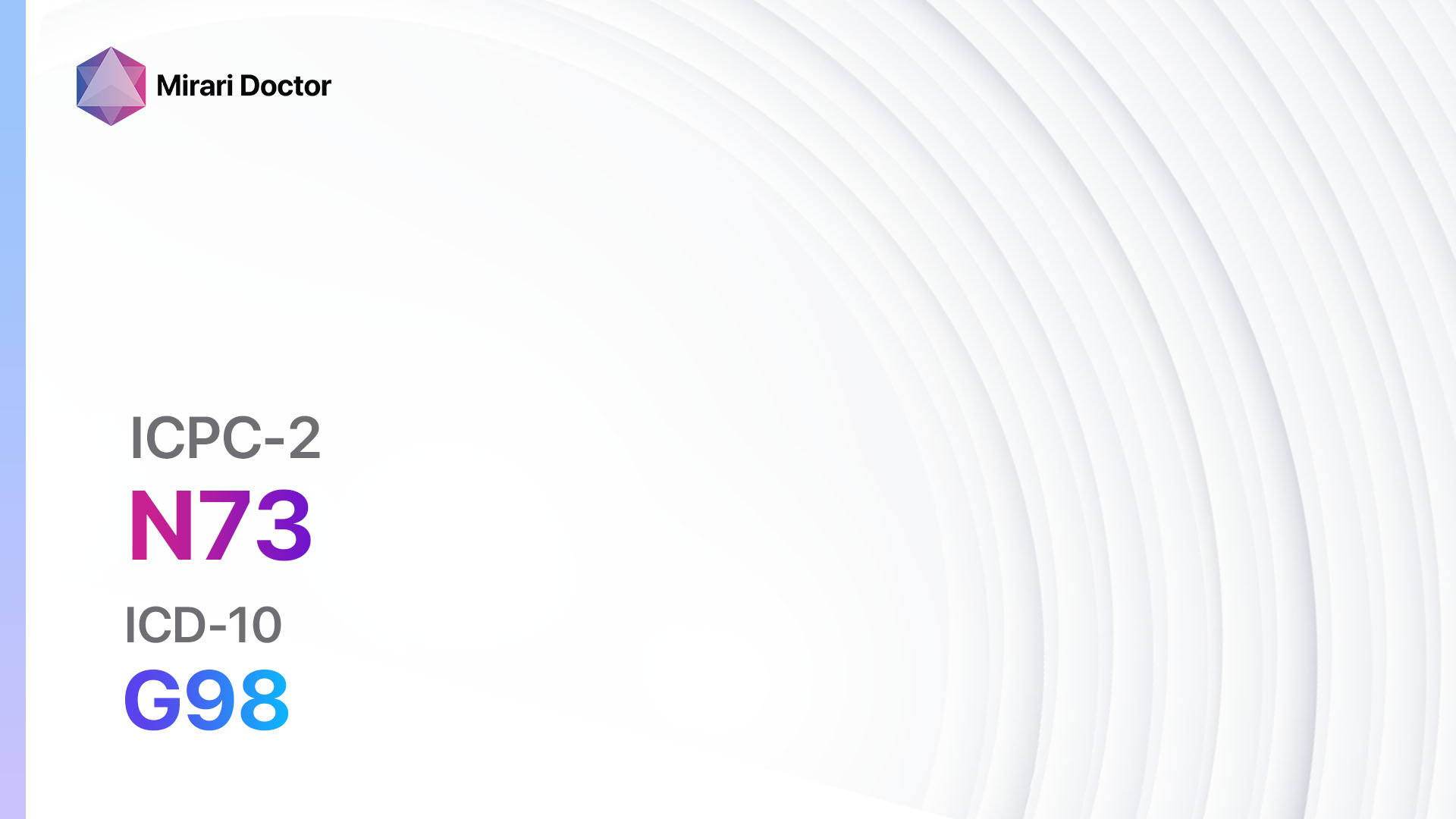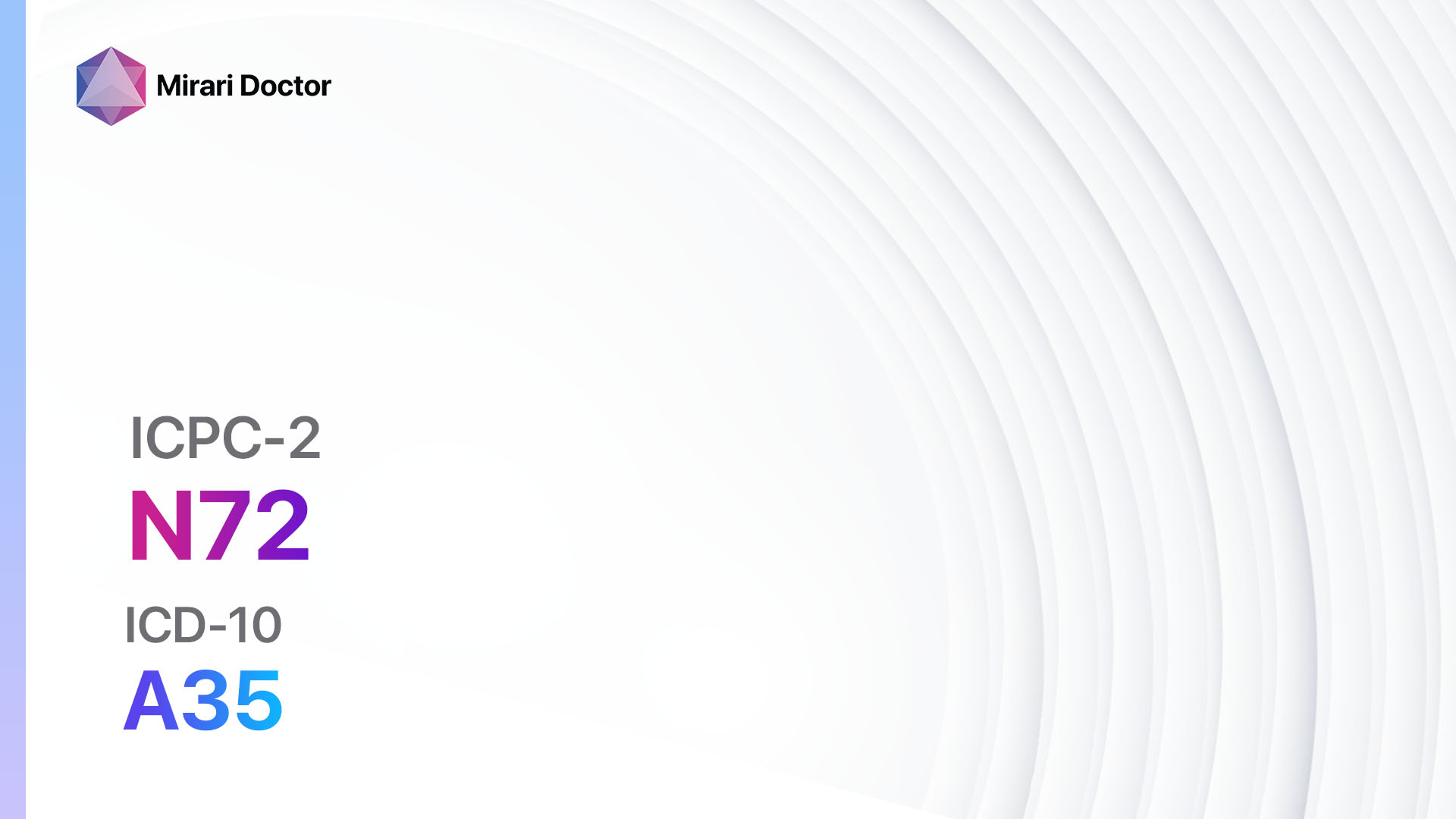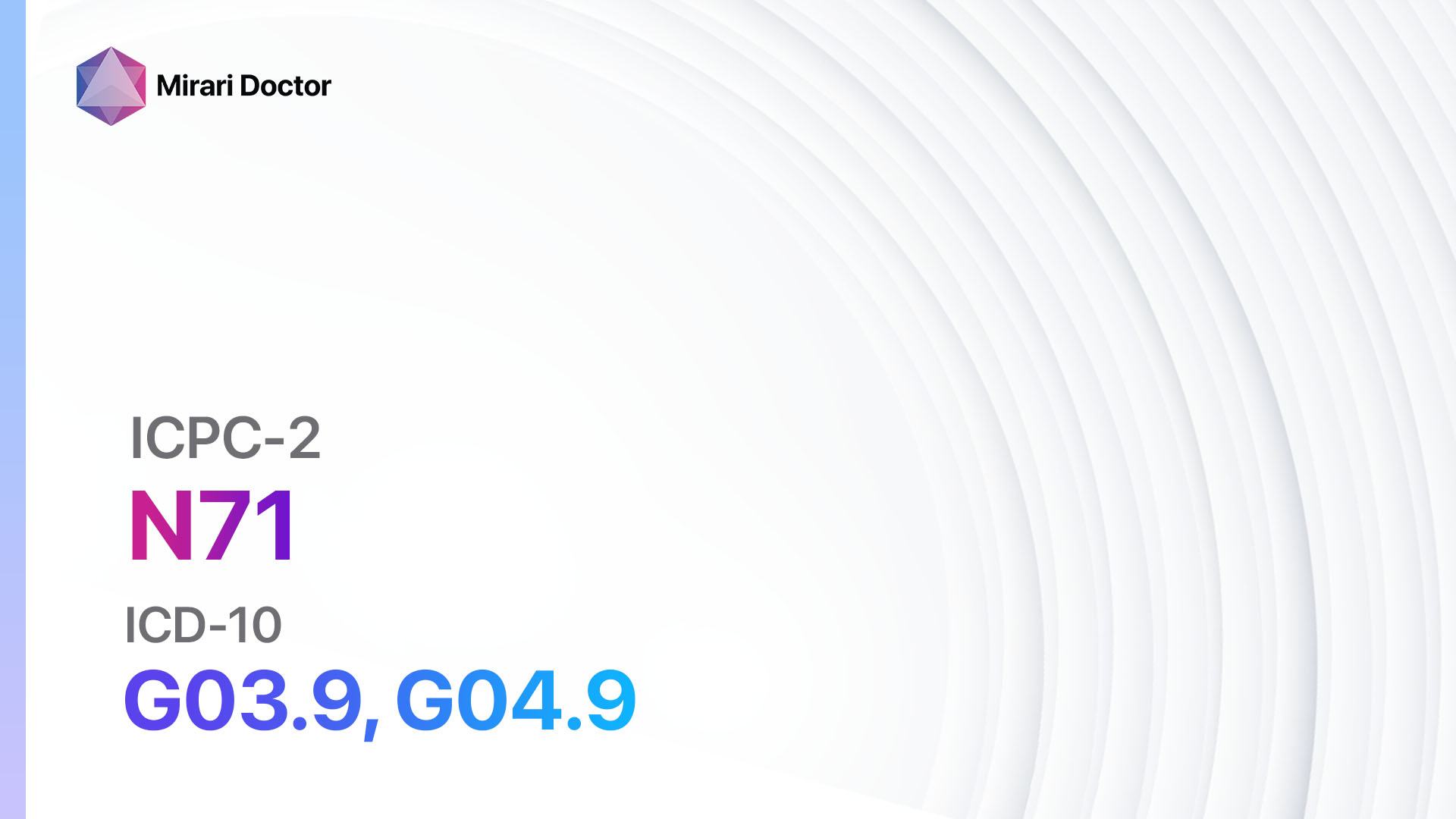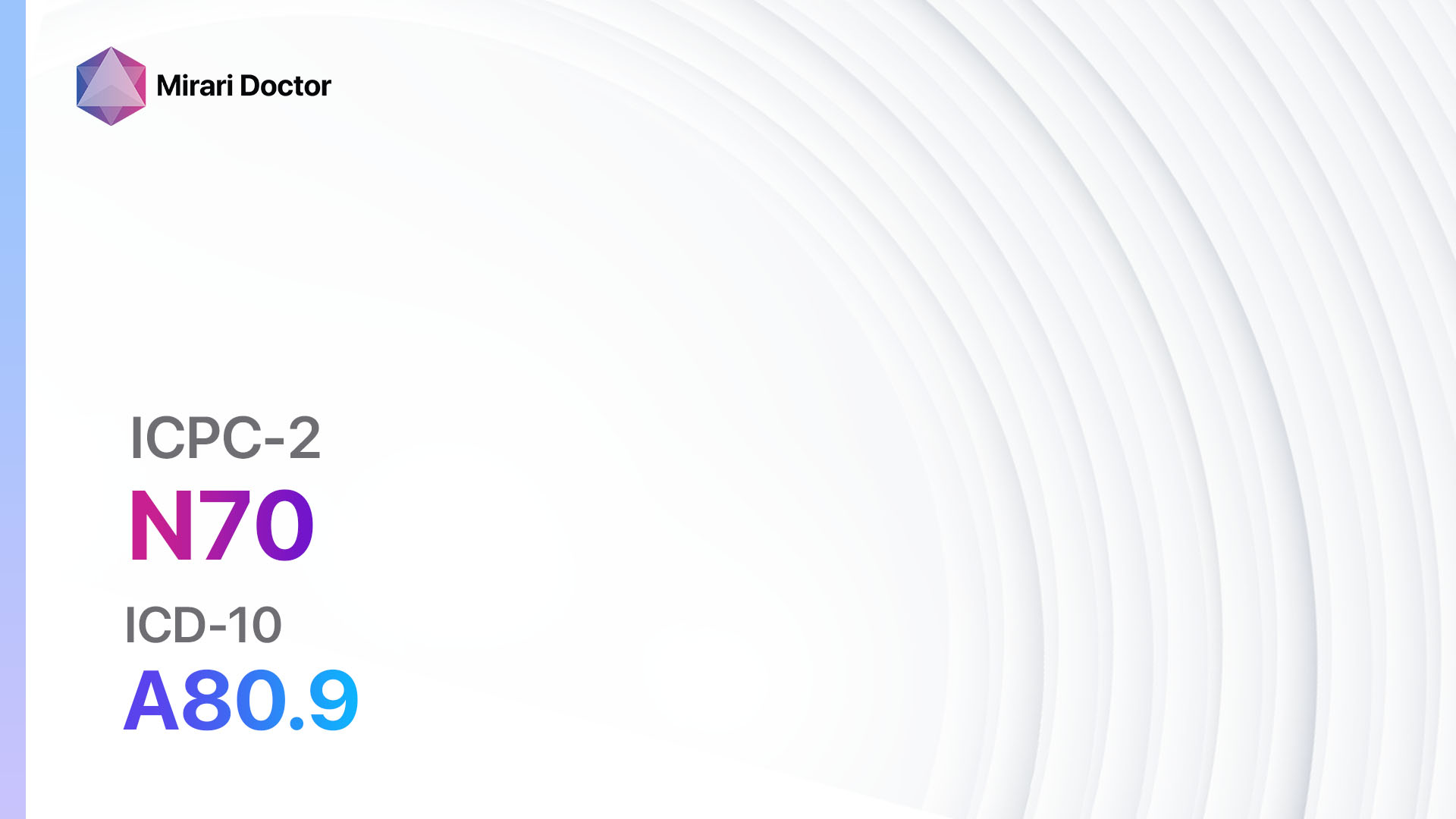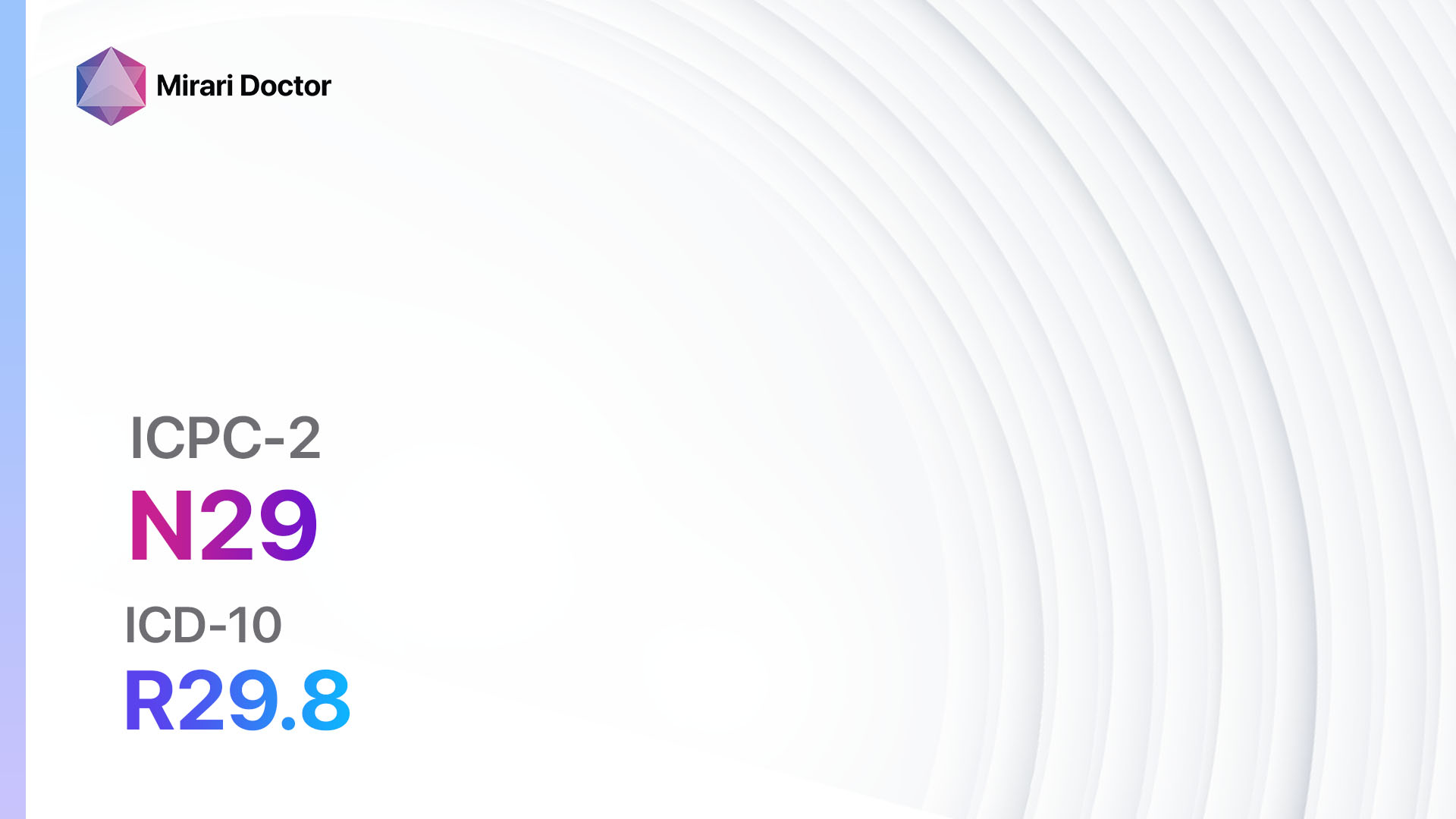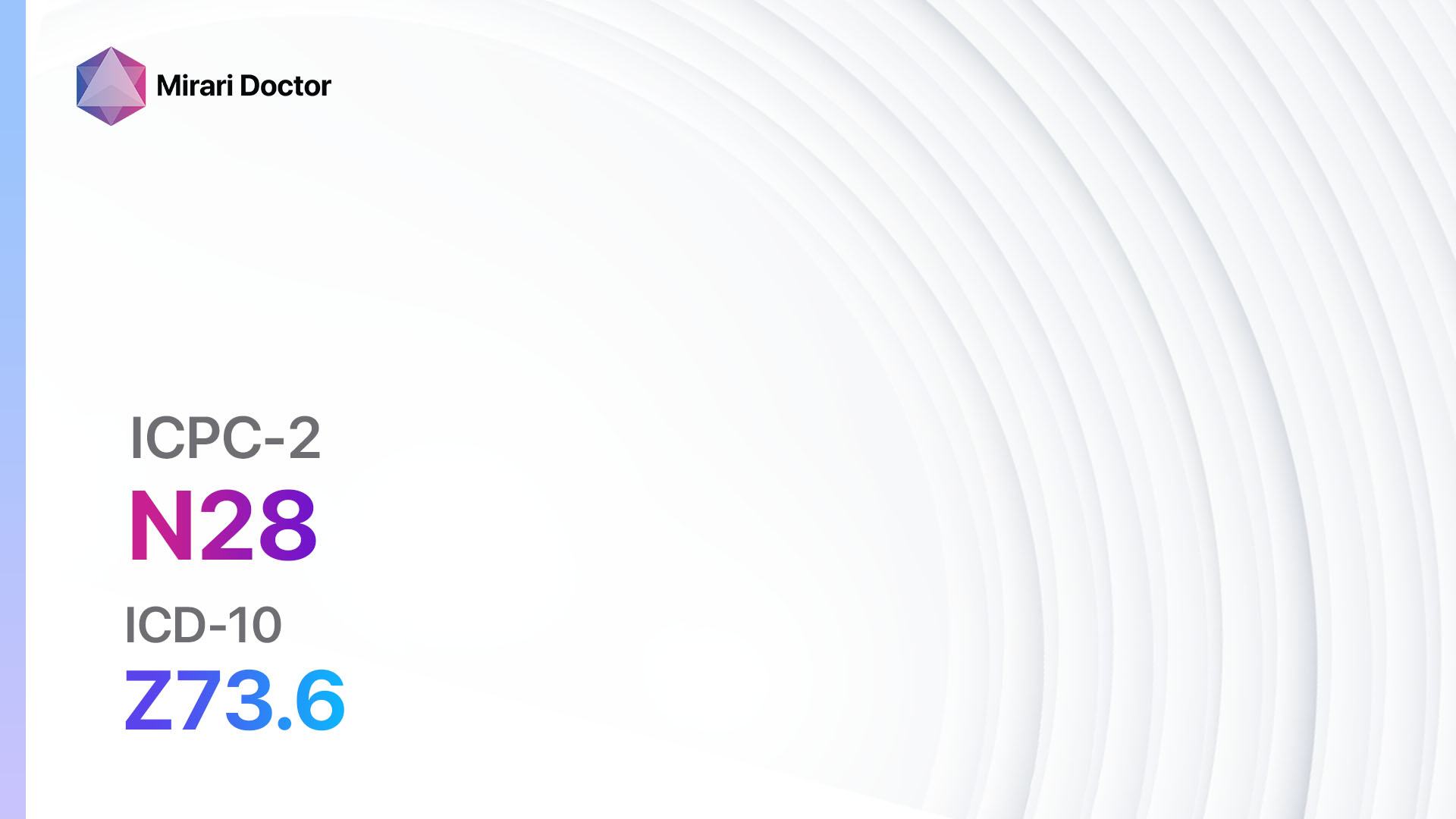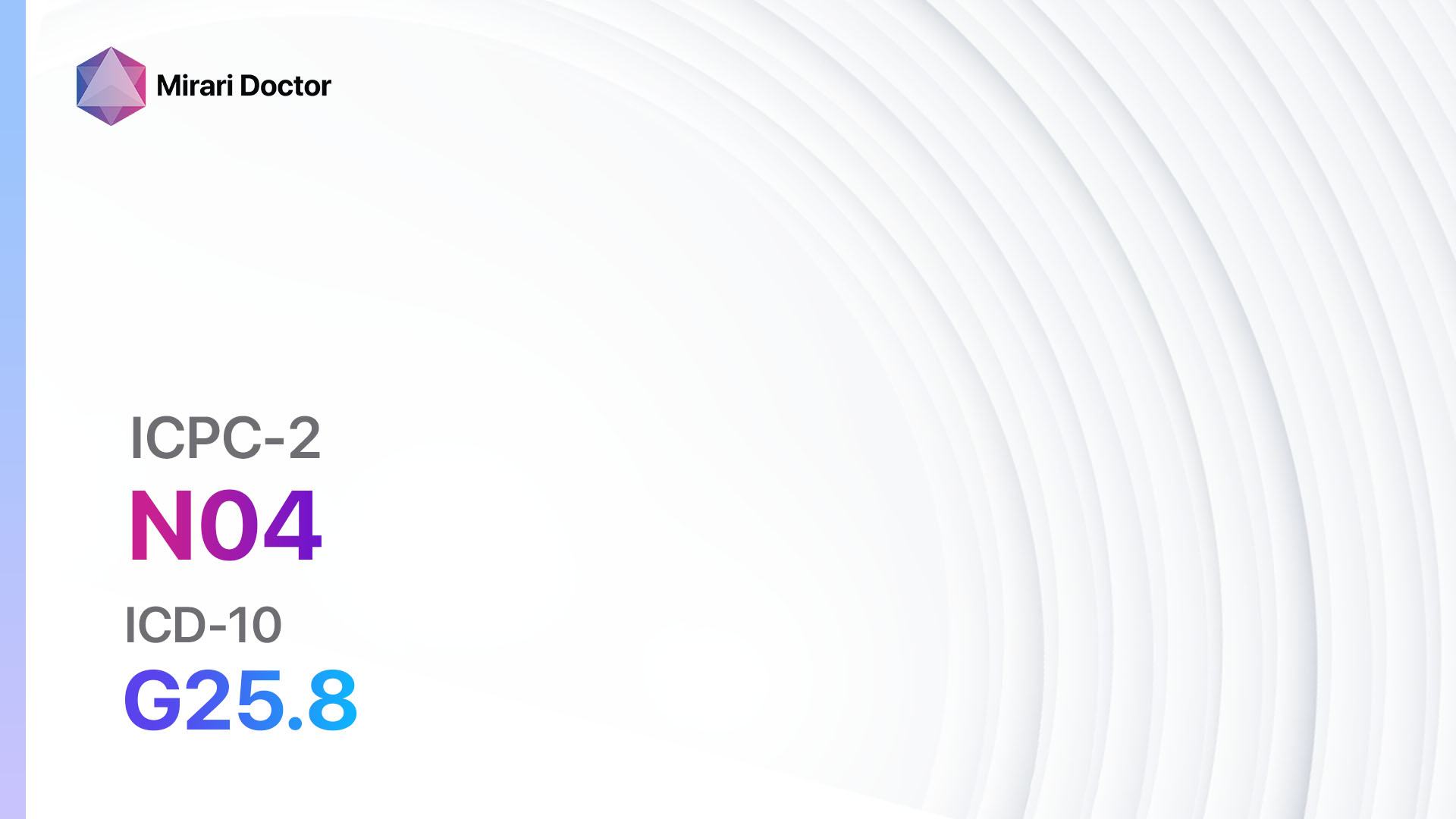
Introduction
Restless legs, also known as Willis-Ekbom disease, is a neurological disorder characterized by an irresistible urge to move the legs. This condition can cause discomfort and disrupt sleep, leading to significant impairment in quality of life[1]. The aim of this guide is to provide healthcare professionals with a comprehensive overview of the diagnosis and management of restless legs.
Codes
- ICPC-2 Code: N04 Restless legs
- ICD-10 Code: G25.8 Other specified extrapyramidal and movement disorders
Symptoms
- Sensation of discomfort or unease in the legs
- Urge to move the legs, often accompanied by an unpleasant sensation
- Symptoms worsen during periods of rest or inactivity
- Symptoms improve with movement or stretching[2]
Causes
- Primary restless legs syndrome: The exact cause is unknown, but it is believed to involve abnormalities in the brain’s dopamine system[3].
- Secondary restless legs syndrome: Can be caused by underlying medical conditions such as iron deficiency, kidney failure, peripheral neuropathy, or pregnancy[4].
Diagnostic Steps
Medical History
- Gather information about the patient’s symptoms, including the frequency, duration, and severity.
- Identify any factors that worsen or alleviate the symptoms, such as physical activity or certain medications.
- Assess the patient’s medical history for any underlying conditions that may contribute to restless legs, such as iron deficiency or kidney disease.
- Inquire about the patient’s sleep patterns and any sleep disturbances[5].
Physical Examination
- Perform a thorough physical examination, focusing on the legs and neurological system.
- Look for any signs of iron deficiency, such as pale conjunctiva or spoon-shaped nails.
- Assess for any sensory abnormalities or signs of peripheral neuropathy.
- Evaluate the patient’s muscle tone and strength[6].
Laboratory Tests
- Complete blood count (CBC): To assess for iron deficiency or anemia.
- Ferritin level: Low levels may indicate iron deficiency.
- Renal function tests: To evaluate kidney function.
- Glucose level: To rule out diabetes as a cause of peripheral neuropathy.
- Thyroid function tests: To assess thyroid function, as thyroid disorders can contribute to restless legs.
- Pregnancy test: For female patients of childbearing age[7].
Diagnostic Imaging
- Imaging studies are not typically necessary for the diagnosis of restless legs. However, in some cases, an MRI or CT scan may be ordered to rule out other conditions that can cause similar symptoms, such as spinal cord abnormalities[8].
Other Tests
- Polysomnography: Sleep study to evaluate for any sleep disorders, such as periodic limb movement disorder, which can coexist with restless legs.
- Nerve conduction studies: To assess for peripheral neuropathy if suspected based on clinical presentation[9].
Follow-up and Patient Education
- Schedule a follow-up appointment to review the results of diagnostic tests and discuss treatment options.
- Provide education to the patient about restless legs, including the chronic nature of the condition and the importance of adherence to treatment.
- Discuss lifestyle modifications that may help alleviate symptoms, such as regular exercise and avoiding triggers like
- caffeine or alcohol[10].
Possible Interventions
Traditional Interventions
Medications:
Top 5 drugs for Restless legs:
- Dopamine agonists (e.g., Pramipexole, Ropinirole):
- Cost: $50-$200/month.
- Contraindications: Hypersensitivity to the drug, severe renal impairment.
- Side effects: Nausea, dizziness, daytime sleepiness.
- Severe side effects: Compulsive behaviors, hallucinations.
- Drug interactions: Antipsychotics, antidepressants.
- Warning: May cause augmentation of symptoms with long-term use.
- Gabapentin enacarbil:
- Cost: $100-$300/month.
- Contraindications: Hypersensitivity to the drug.
- Side effects: Dizziness, somnolence, headache.
- Severe side effects: Suicidal ideation, angioedema.
- Drug interactions: None of clinical significance.
- Warning: May cause drowsiness, caution with driving or operating machinery.
- Benzodiazepines (e.g., Clonazepam):
- Cost: $10-$50/month.
- Contraindications: Hypersensitivity to the drug, severe respiratory insufficiency.
- Side effects: Sedation, dizziness, impaired coordination.
- Severe side effects: Respiratory depression, paradoxical reactions.
- Drug interactions: Alcohol, opioids.
- Warning: Risk of dependence and withdrawal symptoms with long-term use.
- Opioids (e.g., Tramadol, Oxycodone):
- Cost: $20-$100/month.
- Contraindications: Hypersensitivity to the drug, respiratory depression.
- Side effects: Constipation, nausea, drowsiness.
- Severe side effects: Respiratory depression, addiction.
- Drug interactions: Benzodiazepines, alcohol.
- Warning: Risk of dependence and addiction, caution with driving or operating machinery.
- Iron supplements:
- Cost: $5-$20/month.
- Contraindications: Hemochromatosis, iron overload.
- Side effects: Constipation, nausea, abdominal pain.
- Severe side effects: Iron overload, organ damage.
- Drug interactions: Antacids, tetracyclines.
- Warning: Regular monitoring of iron levels and potential need for dose adjustment.
Alternative Drugs:
- Anticonvulsants (e.g., Carbamazepine, Valproic acid): May be considered as an alternative for patients who do not respond to or cannot tolerate dopamine agonists.
- Benzodiazepine receptor agonists (e.g., Zolpidem, Eszopiclone): Can be used for patients with coexisting insomnia.
- Antidepressants (e.g., Amitriptyline, Venlafaxine): May be beneficial for patients with coexisting depression or anxiety.
- Antihistamines (e.g., Diphenhydramine, Doxylamine): Can provide temporary relief for mild symptoms, but long-term use is not recommended due to potential side effects.
Surgical Procedures:
- Deep brain stimulation (DBS): Involves the implantation of electrodes in specific areas of the brain to modulate abnormal neuronal activity. Cost: $50,000 to $100,000.
Alternative Interventions
- Acupuncture: May help alleviate symptoms and improve sleep quality. Cost: $60-$120 per session.
- Yoga and meditation: Can promote relaxation and reduce stress, potentially improving symptoms. Cost: Varies depending on the class or instructor.
- Massage therapy: May provide temporary relief from symptoms and promote relaxation. Cost: $50-$100 per session.
- Transcutaneous electrical nerve stimulation (TENS): Involves the use of low-voltage electrical currents to stimulate the nerves and reduce symptoms. Cost: $50-$100 for a TENS unit.
- Compression therapy: Wearing compression stockings or sleeves can improve blood flow and reduce symptoms. Cost: $20-$50 for a pair of compression stockings.
Lifestyle Interventions
- Regular exercise: Engaging in moderate-intensity exercise, such as walking or swimming, can help reduce symptoms. Cost: Varies depending on the chosen activity.
- Avoidance of triggers: Limiting or avoiding caffeine, alcohol, and tobacco can help alleviate symptoms. Cost: None.
- Warm baths or leg massages: These relaxation techniques may provide temporary relief. Cost: None.
- Establishing a regular sleep routine: Maintaining consistent sleep patterns can help improve sleep quality. Cost: None.
- Stress management techniques: Practicing stress reduction techniques, such as deep breathing or mindfulness, may help alleviate symptoms. Cost: None.
It is important to note that the cost ranges provided are approximate and may vary depending on the location and availability of the interventions.
Mirari Cold Plasma Alternative Intervention
Understanding Mirari Cold Plasma
- Safe and Non-Invasive Treatment:Mirari Cold Plasma is a safe and non-invasive treatment option for various skin conditions. It does not require incisions, minimizing the risk of scarring, bleeding, or tissue damage.
- Efficient Extraction of Foreign Bodies:Mirari Cold Plasma facilitates the removal of foreign bodies from the skin by degrading and dissociating organic matter, allowing easier access and extraction.
- Pain Reduction and Comfort:Mirari Cold Plasma has a local analgesic effect, providing pain relief during the treatment, making it more comfortable for the patient.
- Reduced Risk of Infection:Mirari Cold Plasma has antimicrobial properties, effectively killing bacteria and reducing the risk of infection.
- Accelerated Healing and Minimal Scarring: Mirari Cold Plasma stimulates wound healing and tissue regeneration, reducing healing time and minimizing the formation of scars.
Mirari Cold Plasma Prescription
Video instructions for using Mirari Cold Plasma Device – N04 Restless legs (ICD-10:G25.8)
| Mild | Moderate | Severe |
| Mode setting: 2 (Wound Healing) Location: 0 (Localized) Morning: 15 minutes, Evening: 15 minutes | Mode setting: 2 (Wound Healing) Location: 0 (Localized) Morning: 30 minutes, Lunch: 30 minutes, Evening: 30 minutes | Mode setting: 2 (Wound Healing) Location: 0 (Localized) Morning: 30 minutes, Lunch: 30 minutes, Evening: 30 minutes |
| Mode setting: 7 (Immunotherapy) Location: 1 (Sacrum) Morning: 15 minutes, Evening: 15 minutes | Mode setting: 7 (Immunotherapy) Location: 1 (Sacrum) Morning: 30 minutes, Lunch: 30 minutes, Evening: 30 minutes | Mode setting: 7 (Immunotherapy) Location: 1 (Sacrum) Morning: 30 minutes, Lunch: 30 minutes, Evening: 30 minutes |
| Mode setting: 7 (Immunotherapy) Location: 1 (Sacrum) Morning: 15 minutes, Evening: 15 minutes | Mode setting: 7 (Immunotherapy) Location: 1 (Sacrum) Morning: 30 minutes, Lunch: 30 minutes, Evening: 30 minutes | Mode setting: 7 (Immunotherapy) Location: 1 (Sacrum) Morning: 30 minutes, Lunch: 30 minutes, Evening: 30 minutes |
| Total Morning: 45 minutes approx. $7.50 USD, Evening: 45 minutes approx. $7.50 USD | Total Morning: 90 minutes approx. $15 USD, Lunch: 90 minutes approx. $15 USD, Evening: 90 minutes approx. $15 USD | Total Morning: 90 minutes approx. $15 USD, Lunch: 90 minutes approx. $15 USD, Evening: 90 minutes approx. $15 USD |
| Usual treatment for 7-60 days approx. $105 USD – $900 USD | Usual treatment for 6-8 weeks approx. $1,890 USD – $2,520 USD | Usual treatment for 3-6 months approx. $4,050 USD – $8,100 USD |
 |
|
Use the Mirari Cold Plasma device to treat Restless legs effectively.
WARNING: MIRARI COLD PLASMA IS DESIGNED FOR THE HUMAN BODY WITHOUT ANY ARTIFICIAL OR THIRD PARTY PRODUCTS. USE OF OTHER PRODUCTS IN COMBINATION WITH MIRARI COLD PLASMA MAY CAUSE UNPREDICTABLE EFFECTS, HARM OR INJURY. PLEASE CONSULT A MEDICAL PROFESSIONAL BEFORE COMBINING ANY OTHER PRODUCTS WITH USE OF MIRARI.
Step 1: Cleanse the Skin
- Start by cleaning the affected area of the skin with a gentle cleanser or mild soap and water. Gently pat the area dry with a clean towel.
Step 2: Prepare the Mirari Cold Plasma device
- Ensure that the Mirari Cold Plasma device is fully charged or has fresh batteries as per the manufacturer’s instructions. Make sure the device is clean and in good working condition.
- Switch on the Mirari device using the power button or by following the specific instructions provided with the device.
- Some Mirari devices may have adjustable settings for intensity or treatment duration. Follow the manufacturer’s instructions to select the appropriate settings based on your needs and the recommended guidelines.
Step 3: Apply the Device
- Place the Mirari device in direct contact with the affected area of the skin. Gently glide or hold the device over the skin surface, ensuring even coverage of the area experiencing.
- Slowly move the Mirari device in a circular motion or follow a specific pattern as indicated in the user manual. This helps ensure thorough treatment coverage.
Step 4: Monitor and Assess:
- Keep track of your progress and evaluate the effectiveness of the Mirari device in managing your Restless legs. If you have any concerns or notice any adverse reactions, consult with your health care professional.
Note
This guide is for informational purposes only and should not replace the advice of a medical professional. Always consult with your healthcare provider or a qualified medical professional for personal advice, diagnosis, or treatment. Do not solely rely on the information presented here for decisions about your health. Use of this information is at your own risk. The authors of this guide, nor any associated entities or platforms, are not responsible for any potential adverse effects or outcomes based on the content.
Mirari Cold Plasma System Disclaimer
- Purpose: The Mirari Cold Plasma System is a Class 2 medical device designed for use by trained healthcare professionals. It is registered for use in Thailand and Vietnam. It is not intended for use outside of these locations.
- Informational Use: The content and information provided with the device are for educational and informational purposes only. They are not a substitute for professional medical advice or care.
- Variable Outcomes: While the device is approved for specific uses, individual outcomes can differ. We do not assert or guarantee specific medical outcomes.
- Consultation: Prior to utilizing the device or making decisions based on its content, it is essential to consult with a Certified Mirari Tele-Therapist and your medical healthcare provider regarding specific protocols.
- Liability: By using this device, users are acknowledging and accepting all potential risks. Neither the manufacturer nor the distributor will be held accountable for any adverse reactions, injuries, or damages stemming from its use.
- Geographical Availability: This device has received approval for designated purposes by the Thai and Vietnam FDA. As of now, outside of Thailand and Vietnam, the Mirari Cold Plasma System is not available for purchase or use.
References
- Allen RP, Picchietti DL, Garcia-Borreguero D, et al. Restless legs syndrome/Willis-Ekbom disease diagnostic criteria: updated International Restless Legs Syndrome Study Group (IRLSSG) consensus criteria–history, rationale, description, and significance. Sleep Med. 2014;15(8):860-873.
- Trenkwalder C, Allen R, Högl B, Paulus W, Winkelmann J. Restless legs syndrome associated with major diseases: A systematic review and new concept. Neurology. 2016;86(14):1336-1343.
- Earley CJ, Kuwabara H, Wong DF, et al. The dopamine transporter is decreased in the striatum of subjects with restless legs syndrome. Sleep. 2011;34(3):341-347.
- Guo S, Huang J, Jiang H, et al. Restless Legs Syndrome: From Pathophysiology to Clinical Diagnosis and Management. Front Aging Neurosci. 2017;9:171.
- Hening W, Allen RP, Tenzer P, Winkelman JW. Restless legs syndrome: demographics, presentation, and differential diagnosis. Geriatrics. 2007;62(9):26-29.
- Silber MH, Becker PM, Earley C, Garcia-Borreguero D, Ondo WG; Medical Advisory Board of the Willis-Ekbom Disease Foundation. Willis-Ekbom Disease Foundation revised consensus statement on the management of restless legs syndrome. Mayo Clin Proc. 2013;88(9):977-986.
- Salas RE, Gamaldo CE, Allen RP. Update in restless legs syndrome. Curr Opin Neurol. 2010;23(4):401-406.
- Rizzo G, Manners D, Testa C, et al. Low brain iron content in idiopathic restless legs syndrome patients detected by phase imaging. Mov Disord. 2013;28(13):1886-1890.
- Montplaisir J, Boucher S, Poirier G, Lavigne G, Lapierre O, Lespérance P. Clinical, polysomnographic, and genetic characteristics of restless legs syndrome: a study of 133 patients diagnosed with new standard criteria. Mov Disord. 1997;12(1):61-65.
- Aukerman MM, Aukerman D, Bayard M, Tudiver F, Thorp L, Bailey B. Exercise and restless legs syndrome: a randomized controlled trial. J Am Board Fam Med. 2006;19(5):487-493.
Related articles
Made in USA


